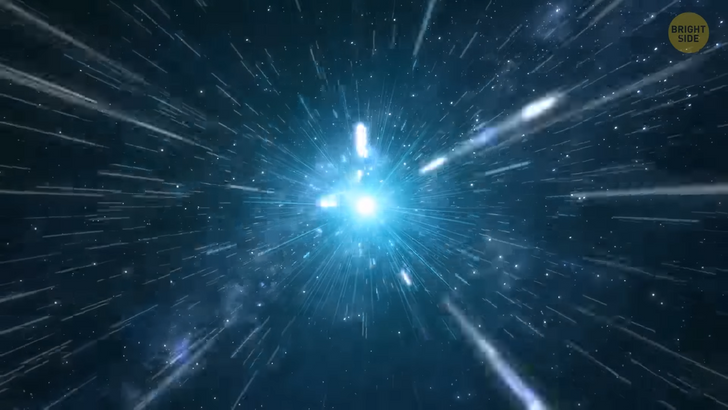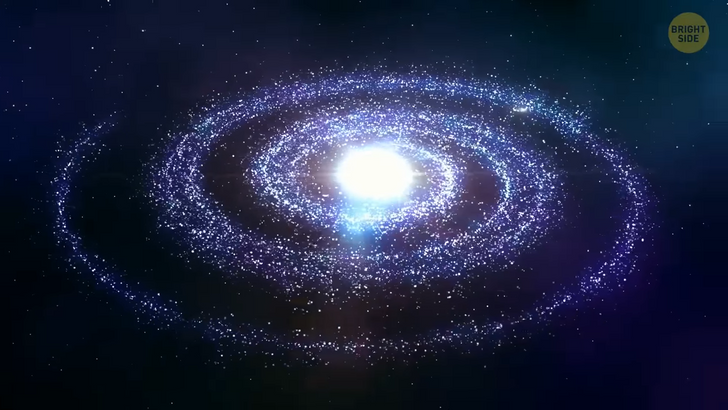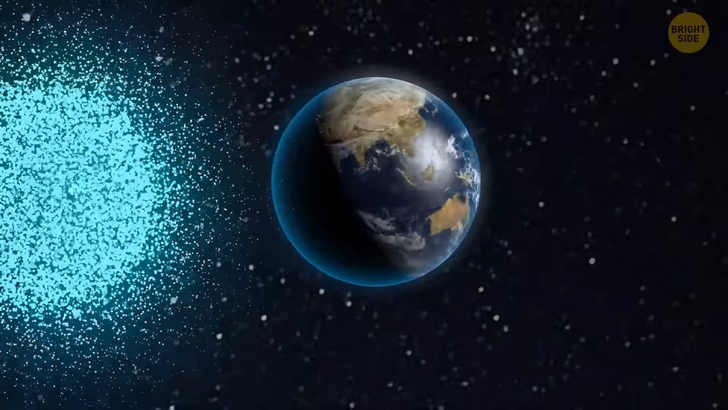My In-Laws Are After My Husband’s Life Insurance—And I Fear for My Kids

Tired of boring old Earth? Want to know what lies beyond the starry night sky? You’re not the only one. People have been asking the same question for centuries. Luckily, scientists got you covered.
They have discovered a lot about amazing places light-years away from our Blue Planet. Just one light year is about 6 trillion miles; mind-blowing, huh? So, hop on, the spaceship of knowledge is lifting off.

Your first stop is 2.5 billion light-years away from Earth. It’s a quasar, one of the brightest objects in the universe and the first one to be discovered [3C 273]. A quasar isn’t a star but a distant galaxy. This extremely bright object gets its power from a supermassive black hole. A disk of matter swirls around the black hole and creates friction.
It’s kinda like when you are cold and rub your hands together to stay warm. The friction between the palms creates heat, making you feel nice and cozy. The same happens in the quasar, just the amount of heat is bigger; way bigger. I hope you remembered to pack sunscreen lotion. The temperature at the heart of this quasar can reach 18 trillion degrees F. Also, there is light; a lot of it. This celestial object shines a hundred times brighter than all the stars in its galaxy put together.
It’s time to cool down a bit. Minus 457 degrees F to be precise. This is the temperature of a young planetary nebula called the Boomerang Nebula. It sits 5,000 light-years away from Earth. NASA’s Hubble Space Telescope caught images of the formation in 1998. It’s composed of gas coming from a star near the end of its life cycle. Inside the nebula, it is windier than in the Windy City.
Winds reach speeds up to 310,000 miles per hour. And you gotta thank them for the Nebula’s chilling temperatures. Researchers were impressed to find out that the temperature of the Boomerang Nebula is just one degree above absolute zero [—459.67°F]. Zero kelvins should be the coldest temperature possible. This is the point where all molecular and atomic activity stops. Brrr. Makes you want to crank up the thermostat in your spaceship.

Next, you’re going to a place you might not want to visit. Sorry. So, it’s the most massive black hole [Ton 618]. This giant is located at the heart of a large galaxy, some 10.4 billion light-years from our planet. Its mass is 66 billion times greater than that of the Sun. Enough to make our galaxy’s [The Milky Way] supermassive black hole [Sagittarius A*] feel ashamed. It has a mass of merely 4.5 million times that of the Sun.
But you better not get near any of them, as a black hole’s diet consists of matter. By calculating how much matter they consume, scientists can determine their rate of expansion. And those black holes have quite an appetite. Astronomers believe there are Stupendously LArge Black holeS [SLABS] hiding somewhere in the Universe. If they’re real, their mass is estimated to be greater than one hundred billion times that of the Sun.
It’s time to snack on something light. The spaceship enters the Kepler-51 system. It is home to the lightest planets in the known Universe [Kepler-51b, Kepler-51c, Kepler-51d], called super-puffs. Sounds fluffy enough, and it is. These planets’ mass is either the same or slightly greater than that of Earth. But this doesn’t mean they are small.
Think of them as giant cotton candies the size of Jupiter. They are newly born planets whose atmosphere is still cooling down. You might want to wait for this process to be over, though, as 500 degrees Fahrenheit is too hot to handle. But for experts, super-puffs are special. These planets are incredibly rare, as they have managed to discover less than 20 so far.

Are you up for a race? Let’s say the ship you are on is traveling at a speed of 25,000 miles per hour. This is the current human speed record. It was set by NASA’s astronaut trio from the Apollo 10 mission in 1969. And no, I am not talking about Neil Armstrong and Buzz Aldrin. That was the Apollo 11 mission later that year. Right now, you are going to race against a star 18,000 light-years from Earth [PSR J1748−2446ad]. Your biggest advantage is that this is a neutron star.
It was formed when another massive star ran out of nuclear fuel and couldn’t support itself anymore. Think of a car running on an empty tank; victory couldn’t be closer, right? Well, not quite. When a massive star feels like its time is up, it shrinks and starts spinning. Figure skaters do the same during a spin. They fold in their arms to increase rotation to the maximum. This neutron star is the champion of the Universe. It spins at a speed of 157 million miles per hour. That’s roughly 24 percent of the speed of light [670 million mph]. Whoa!
Are you running low on energy at this point? Time to charge up from a gamma-ray burst [GRB]. Gamma rays are electromagnetic waves generated by various forms of radiation. These bursts were fairly unknown to science until the late 1960s. Satellites equipped with gamma-ray detectors accidentally recorded huge outbursts of radiation outside of our Solar system. What were they? Nothing dark, definitely, as these are the most energetic forms of light.
Scientists believe that gamma-ray bursts happen when two neutron stars collide and form a black hole. The other explanation is that they are the final stage in the life of a supernova. This event happens when a star decides to go out with a bang. Gamma-ray bursts shine brighter than a diamond. They are a million trillion times brighter than the Sun. Talk about an energy boost.

Your mood has lightened up by now. You want to visit a place that has a draw to it. No, it’s not a beach resort but a magnetar. It is a neutron star with a twist. Magnetars have a magnetic field that is a trillion times stronger than that on our planet. But don’t fall for their strong appeal. Let’s just say that you won’t live to tell the tale if you get too close to one.
In 2004, a flare that came off the surface of a magnetar managed to compress Earth’s magnetic field from a distance of 50,000 light years. Quite impressive for a star the size of a city. Makes you wish to team up with this oversized magnet to commit the greatest heist ever. A magnetar has the ability to swipe all the credit cards on planet Earth from a distance halfway to the Moon. Luckily for humans, NASA has discovered only 31 of these stars so far.
You have barely escaped the pull of a magnetar. Suddenly, you start to sense a strange force drawing you away from your home base. It is the Great Attractor: one of the biggest mysteries of the Universe. This massive gravitational irregularity has been pulling us closer and closer to it for billions of years.
Scientists estimate that The Great Attractor is located at the center of the Laniakea [luh-nahy-uh-kee-uh] supercluster. The name means immeasurable heaven in Hawaiian. It represents a gigantic collection of planets, stars, and asteroids. Our home galaxy, the Milky Way, is just a speck in this enormous supercluster.

According to the Big Bang theory, not the TV show, the real theory, the universe has been expanding in all directions. But the mysterious Great Attractor is slowing things down. How exactly? Researchers still need to figure this one out.
On the bright side, they are good at naming things. The end of the universe would be called the Big Crunch. If there’s anyone left to call it that. Your journey, too, ends at the edge of the universe. The most distant galaxy from Earth [HD1] is the oldest one as well.
The galaxies that formed first after the Big Bang have drifted the furthest. So every time advanced telescopes detect a far, far away dot, they give scientists an image of the origins of the universe.











